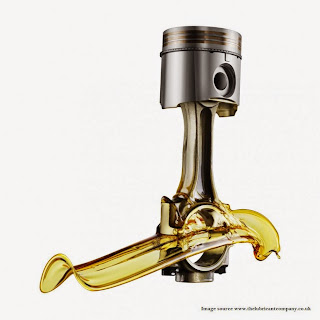Leading Players Adopted New Product Launches and Product Approvals as Strategies to Gain Traction in the Global Automotive Lubricant market
 Lubricants form a crucial part of automobiles as they
not only smoothen the moving parts but also reduce friction and wear-and-tear. International
competition, rapid technological changes, and increasingly stringent government
regulations are projected to drive the market for lubricant in the coming
years.
Lubricants form a crucial part of automobiles as they
not only smoothen the moving parts but also reduce friction and wear-and-tear. International
competition, rapid technological changes, and increasingly stringent government
regulations are projected to drive the market for lubricant in the coming
years.
The automotive and
petroleum industries are facing stiff international competition, government
regulations, and rapid technological changes. Increasingly stringent government
regulations create the need for improved fuel economy and lower emissions from
automotive fuel and lubricant systems. Engine oils that conserve more energy
and more fuel-efficient vehicles will become increasingly important, prompted
by the growing emphasis on saving resources and reducing engine friction. Automotive lubricants are crucial for the proper
functioning of the vehicle. The primary function of automotive lubricants is to
reduce friction and wear-and-tear. They are also used to transfer heat,
transmit power, and prevent rust and corrosion. Automotive lubricants are
manufactured from base oils. The desired properties are imparted to the lubricants
by blending base oils with various additives such as viscosity index improvers,
dispersants, and detergents. These additives improve the functioning and
lifespan of the lubricants.
Asia Pacific and
North America account for a significant portion of the automotive lubricant market.
The passenger car segment is the largest contributing segment of the automotive
lubricant market, followed by the LCV and HCV segments.
Automotive lubricant
market technologies have witnessed significant advancements over the last few
decades, which are transforming its demand and supply throughout the world. Asia
Pacific is the leader in the production of vehicles, followed by Europe and
North America.
The automotive lubricant market is segmented on the basis of vehicle type, application, and
geography. The vehicle type segment is further segmented into passenger car,
LCV, and HCV. The key driver for this segment is the global production of
vehicles. The application segment comprises engine oil, transmission fluid, and
brake fluid. A restraint for the engine oil segment is the downsizing of engines
in passenger cars. On the basis of geography, the global automotive lubricant
market is divided into Asia-Pacific, Europe, North America, and RoW. Asia-Pacific
currently leads the overall global automotive lubricant market.
Recent Report From MicroMarket Monitor @ http://www.micromarketmonitor.com/market-report/automotive-lubricant-reports-6793977885.html
Comments
Post a Comment